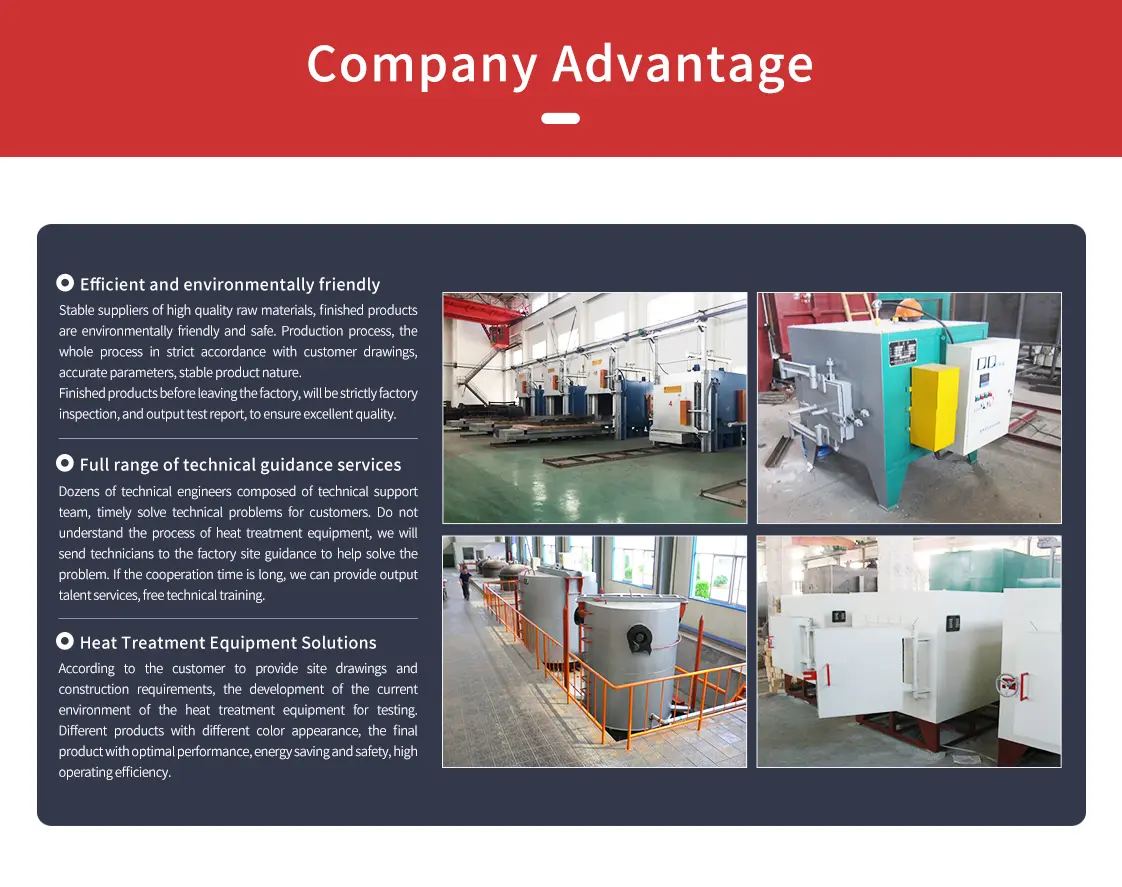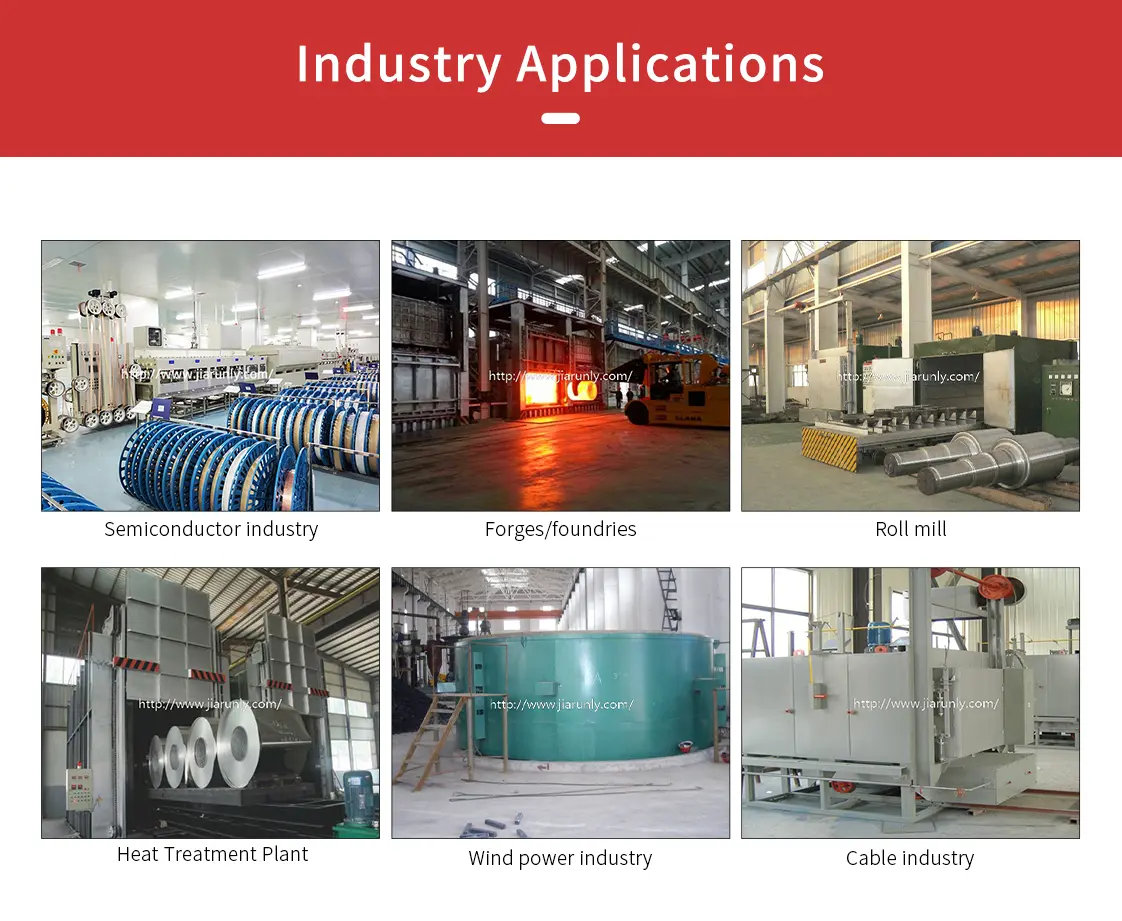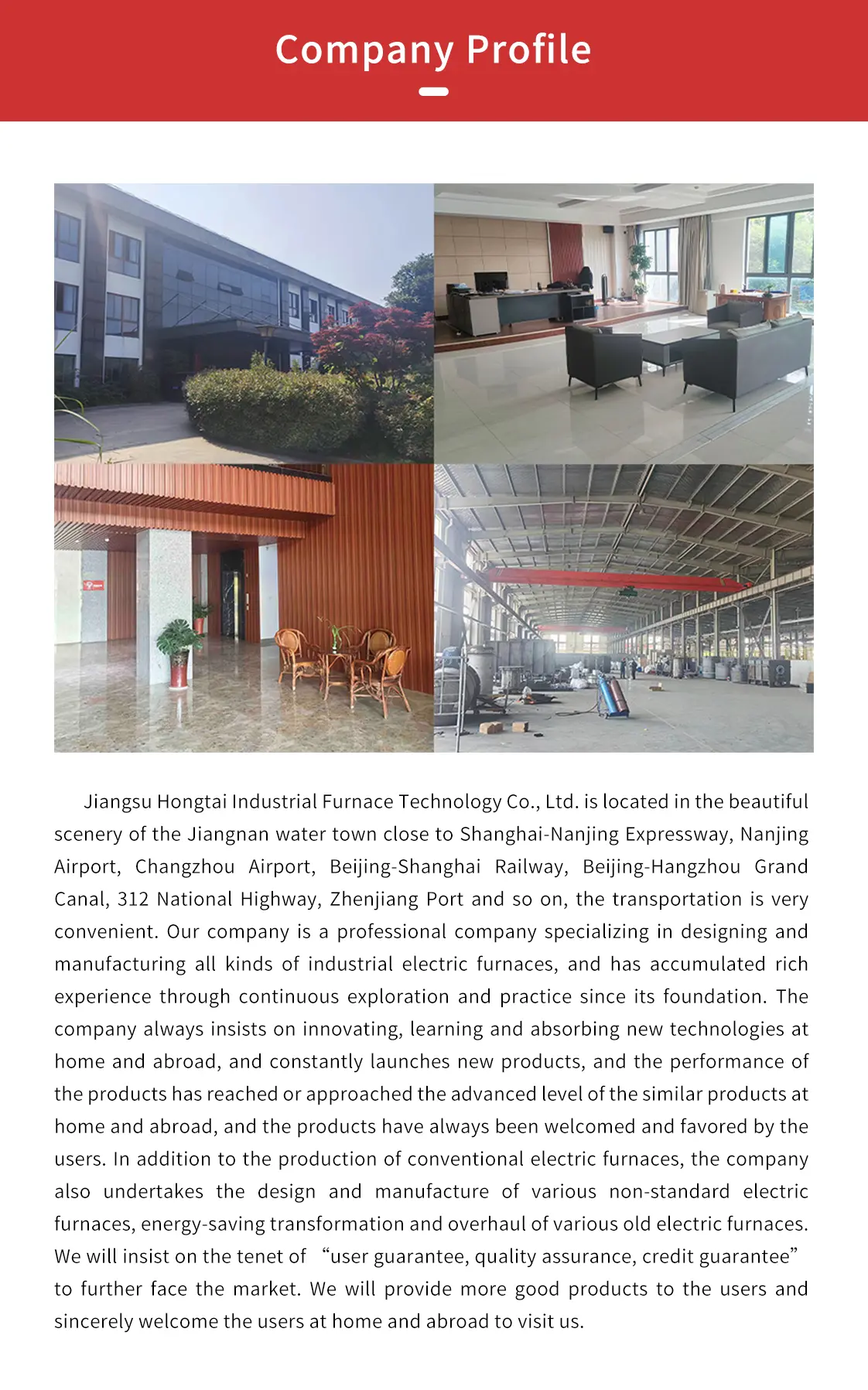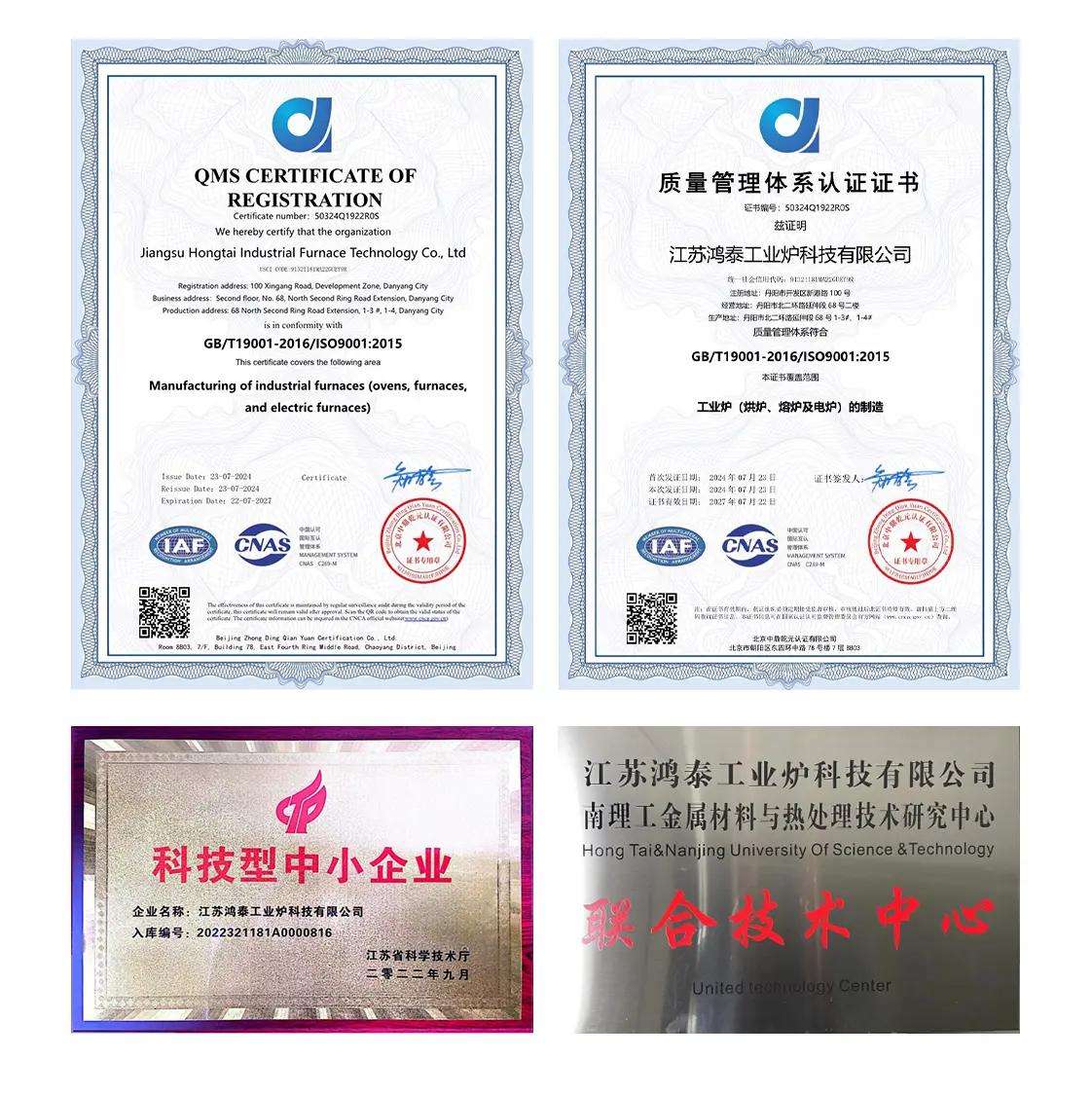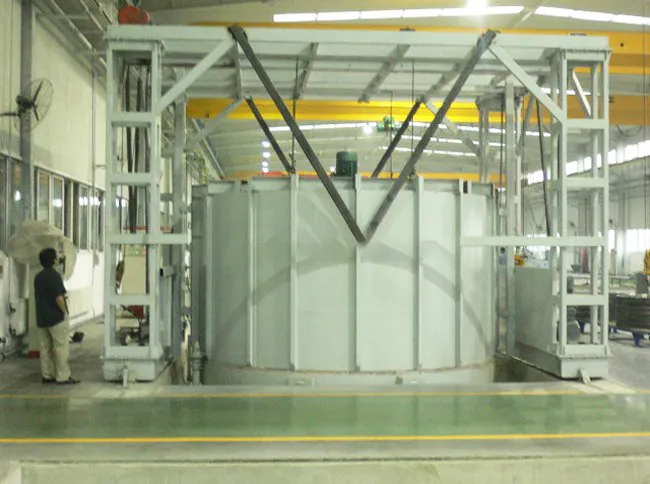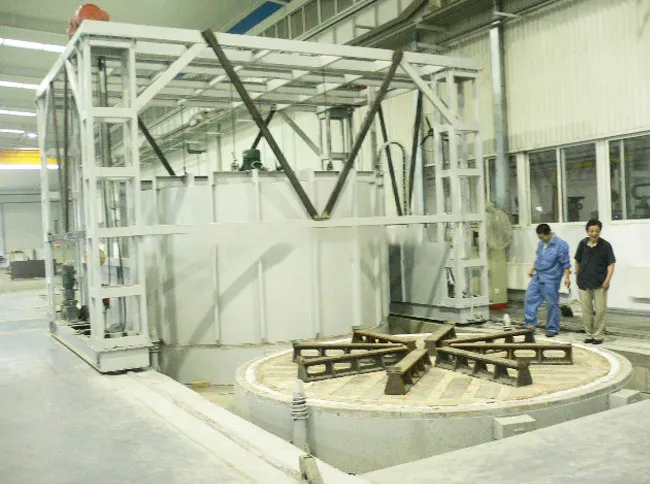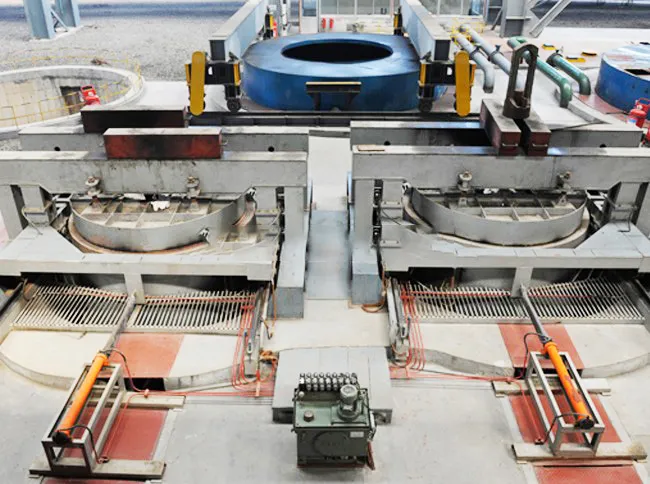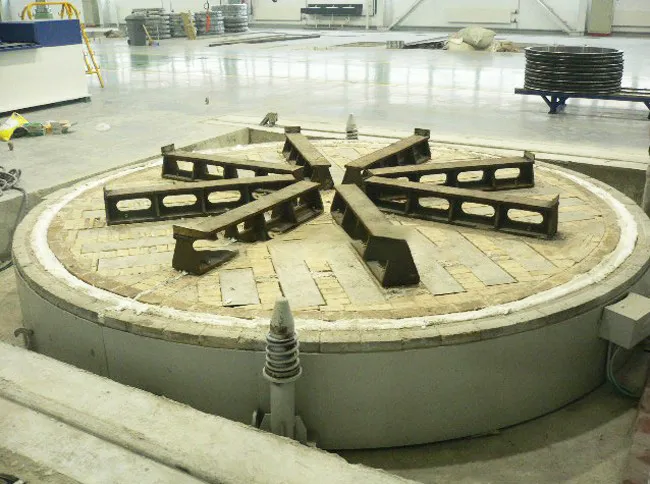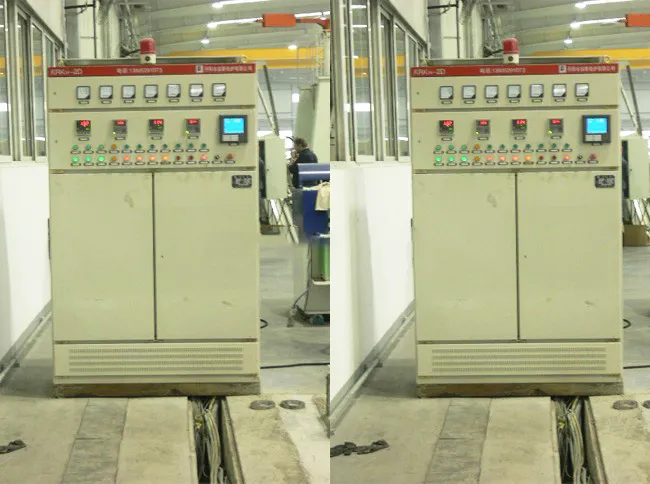- Vacuum furnace & oven
- Annealing Furnace & Oven
- Tempering furnace & oven
-
Carburizing furnace & Ovens
-
Bell Type Furnace
-
Pit Type Furnace & Well Type Furnace
-
Box Furnace & Chamber Furnace
-
Car Bottom Furnace & Bogie Hearth Furnace
-
Nitriding furnace & Ovens
-
Melting furnace & Ovens
- Quenching furnace & Ovens
-
Rapid quenching furnace & Ovens
- Forging furnace & Ovens
- Bright heat treatment furnace & Ovens
Hooded Quenching Furnace & Ovens
Heat treatment furnace manufacturer,Jiangsu Hongtai Industrial Furnace Technology Co., Ltd
The hooded quenching furnace is an energy-saving cycle-type operating furnace with super energy-saving construction.
Hooded Quenching Furnace & Ovens
Efficient and Uniform Quenching for Large Components
Product Introduction
Our Hooded Quenching Furnaces and Ovens are specifically designed for the rapid and uniform cooling of large, heavy, or irregularly shaped components after high-temperature heat treatment. The unique hooded design facilitates easy top-loading and unloading of bulky workpieces, making them ideal for industries handling oversized parts such as automotive, heavy machinery, and metal fabrication. These furnaces ensure precise control over the quenching process, which is critical for achieving optimal material hardness, strength, and desired microstructure while minimizing distortion and cracking. With advanced cooling systems and robust construction, our hooded quenching furnaces deliver exceptional performance, reliability, and repeatability for critical heat treatment processes, ensuring the integrity and performance of your large components.
Key Advantages of Our Hooded Quenching Furnaces & Ovens
- Optimized for Large Components: Hooded design facilitates easy top-loading and unloading of heavy, large, or complex workpieces, enhancing operational efficiency.
- Uniform Rapid Cooling: Advanced cooling systems ensure consistent and rapid heat extraction across the entire large workpiece, preventing uneven cooling and material inconsistencies.
- Superior Material Properties: Achieves optimal hardness, strength, and desired microstructure by precisely controlling the quenching rate, crucial for high-performance applications.
- Minimized Distortion & Cracking: Engineered cooling profiles and robust fixturing options reduce internal stresses, significantly minimizing distortion and cracking in complex geometries.
- Versatile Quenching Media: Compatible with various quenching media (e.g., oil, water, polymer, forced air) to suit different material requirements and desired cooling rates.
- Robust & Durable Construction: Built with high-quality materials to withstand the rigors of rapid temperature changes and heavy industrial use, ensuring long operational life.
- Energy Efficiency: Optimized design and insulation minimize energy consumption during the cooling process, leading to lower operating costs for large-scale operations.
- Repeatable Results: Automated control systems ensure consistent quenching parameters, leading to highly repeatable and reliable heat treatment outcomes for every batch.
Technical Specifications
| Parameter | Unit | Range/Value | Notes |
|---|---|---|---|
| Maximum Operating Temperature (Pre-Quench) | °C | Up to 1200 (standard), higher on request | Designed to handle components from high-temperature processes |
| Working Dimensions (Diameter × Height) | mm | Customizable, typically large volumes | Designed to customer specifications for various part sizes and weights |
| Quenching Media | - | Oil, Water, Polymer, Forced Air | Configurable based on material and desired cooling rate |
| Quenching Rate | °C/min | Customizable, high-speed options available | Ensures rapid and uniform cooling for optimal material properties |
| Temperature Uniformity (Pre-Quench) | °C | ±5 to ±10 (typical) | Ensures consistent starting temperature for quenching |
| Load Capacity | kg | Up to 2500+ | Designed for very heavy and large components |
Working Principle
Hooded quenching furnaces are engineered to provide controlled and rapid cooling for large and heavy components after they have undergone high-temperature heat treatment. The process begins with the swift transfer of the heated workpiece from a high-temperature furnace into the hooded quenching unit, often facilitated by an overhead crane due to the size and weight of the components. Once the workpiece is securely positioned, the hood is lowered and sealed. The chosen quenching medium (e.g., oil, water, polymer solution, or forced air) is then rapidly circulated around the component, facilitating efficient heat extraction. The design ensures uniform flow of the quenching medium, minimizing temperature gradients within the large workpiece and thus reducing the risk of distortion or cracking. After the quenching cycle, the component is carefully removed, having achieved the desired hardness and microstructure.
Process Flow
Component Transfer
Heated large components are swiftly transferred from the heating furnace to the hooded quenching unit.
Hood Sealing & Quenching
The hood is lowered and sealed, and the chosen quenching medium is rapidly applied for controlled cooling.
Controlled Cooling Cycle
The system ensures uniform and rapid heat extraction to achieve desired material properties and minimize stress.
Component Unloading
After the quenching cycle, the treated components are safely unloaded from the furnace.
Solving Customer Pain Points
Handling Large & Heavy Components
The hooded, top-loading design simplifies the loading and unloading of oversized, heavy, or irregularly shaped workpieces, improving operational efficiency and safety in quenching processes.
Non-Uniform Quenching in Large Loads
Advanced cooling systems and optimized media circulation ensure exceptional temperature uniformity during rapid cooling, guaranteeing consistent hardness and microstructure across the entire large component.
Material Distortion & Cracking During Quenching
Precisely controlled quenching rates and specialized fixturing minimize thermal stresses, significantly reducing distortion and cracking in complex and sensitive large components during rapid cooling.
Inconsistent Hardness & Microstructure
Our furnaces provide precise control over the quenching process, ensuring repeatable and consistent results in terms of material hardness, strength, and desired microstructure for every large batch.
High Energy Consumption for Quenching Systems
The energy-efficient design and optimized cooling cycles lead to reduced energy consumption and lower operating costs, even for large-scale quenching operations.
Limited Versatility for Diverse Large Applications
These furnaces support a wide range of quenching media and cooling profiles for various large materials and applications, offering high versatility for diverse industrial needs.
Customer Success Story
A major automotive component manufacturer implemented our Hooded Quenching Furnace for the heat treatment of large crankshafts. They observed a significant improvement in the uniformity of hardness and a drastic reduction in post-quenching distortion, leading to higher product quality and reduced rework. This directly translated to increased production efficiency and cost savings.
Customization & Support
We offer extensive customization options for working dimensions, quenching media, and cooling rates to perfectly match the unique requirements of your large-scale quenching applications. Our expert team provides comprehensive support from design and installation to training and after-sales service, ensuring seamless integration and optimal performance for your heavy industrial production needs.
Related Keywords
hooded quenching furnace, large quenching furnace, industrial heat treatment, rapid cooling, uniform quenching, heavy component heat treatment, controlled cooling, material hardness, microstructure optimization, automotive heat treatment, heavy machinery heat treatment, metal fabrication quenching
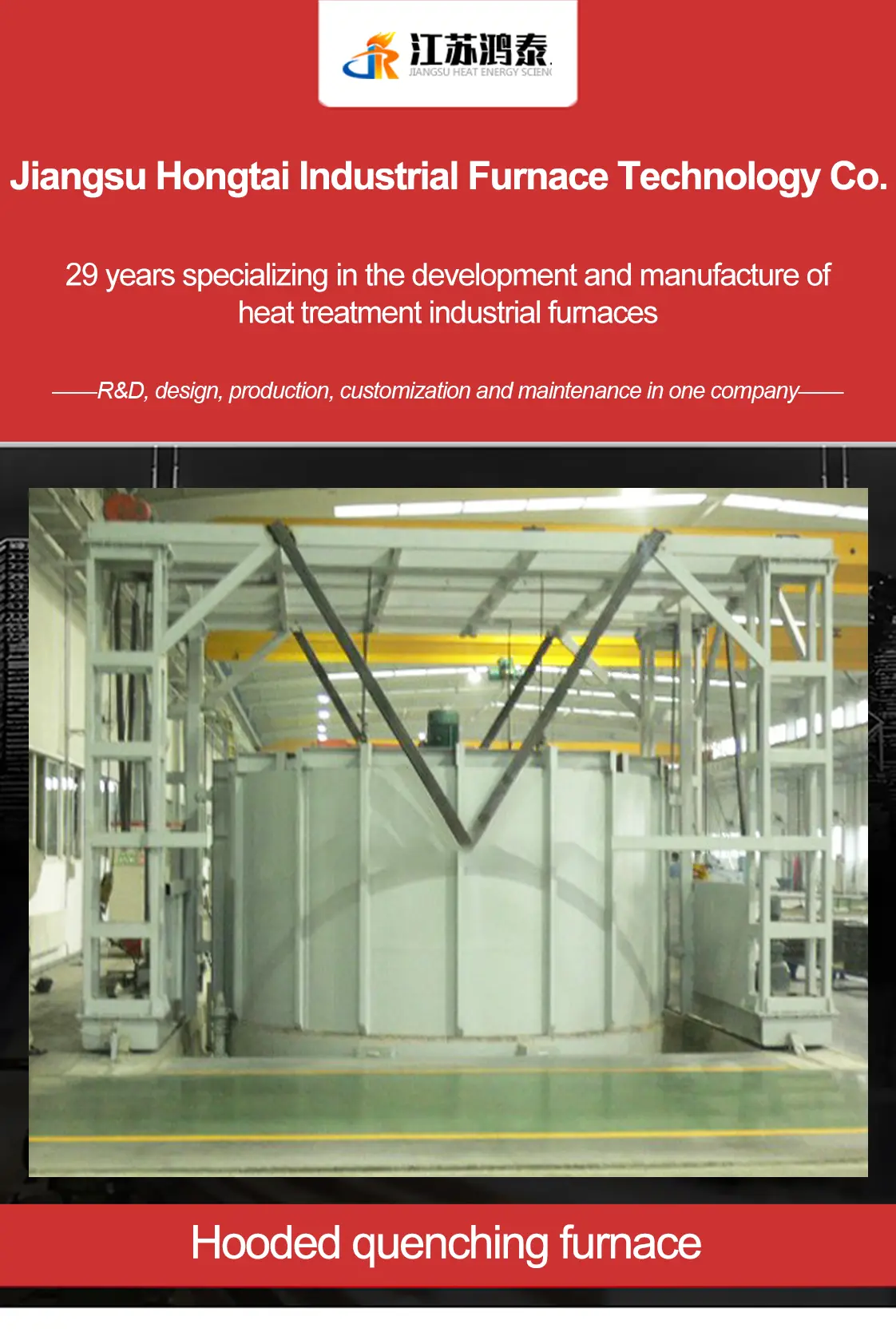
Industrial Value and Application Products
- Automotive Components: Gears, shafts, bearings, and other powertrain components requiring high hardness and wear resistance.
- Fasteners: High-strength bolts, nuts, and screws used in various industries.
- Tools: Hand tools, cutting tools, and other implements that demand exceptional hardness and durability.
- Agricultural Equipment Parts: Components subjected to heavy loads and abrasive conditions.
- Industrial Machine Parts: Various machine elements where high strength and wear resistance are crucial for longevity and performance.
The hooded quenching furnace is an energy-saving cycle-type operation furnace with super energy-saving construction. The cart selects anti-bumping sealing brick, automatic turning brick organization, automatic sealing cart and furnace door, integrated with the rail, no basic equipment, placed on the level ground with the foundation pad iron or expansion screws can be fixed to use.
Application:
Mainly used for high chromium, high manganese steel castings, ductile iron, rolls, steel balls, steel, stainless steel and other quenching, annealing, aging and heat treatment of various mechanical parts.
Structure:
Furnace shell has steel plate and steel welded together, the bottom of the furnace body and the cart light rail as one, the user does not need the root of the equipment, only to be put on the flat cement ground can be used.
Furnace lining selection of ultra-lightweight refractory bricks for the furnace lining, relative to the traditional brick hearth energy-saving about the selection of high-quality long-fiber felts, diatomite bricks, vermiculite powder for insulation materials, the furnace mouth selection of heavy anti-collision bricks, cart surface heavy high-aluminum anti-pressure bricks.
Furnace and cart between the use of labyrinth refractory masonry, but also through their own action of the sealing organization to reduce the heat radiation and convection loss of the furnace, and can improve the uniformity of the furnace temperature.
The heating element is made of high-temperature resistance alloy wire wound into a spiral, scattered on the side of the furnace, the door, the back wall and the cart shelves on the brick, and fixed with the national standard socket brick, safe and simple.
There is a pressure-resistant and high-temperature resistant cast steel furnace floor installed on the trolley to carry the workpiece. In order to prevent the oxidized skin generated after heating the workpiece through the gap between the furnace floor falls into the heating element around the heating element damage, hooded quenching furnace, so the furnace floor and the furnace body touching the selection of piercing type touch.
For normal use, the need for frequent blowing cart furnace bottom plate below the oxide skin is generally blown once a week, blowing the furnace bottom plate lifting, with compressed air will be the resistance wire groove of the oxide skin chips blowing clean, pay attention to prevent the oxide skin stuck in the furnace wire.
Furnace door equipment consists of door, door lifting organization and door pressing equipment. Furnace door shell by the steel and plate welded into a solid frame structure, inside the refractory fiber module stacked into the requirements of good thermal insulation performance, light weight, etc..
Furnace door lifting equipment selection of electric equipment, hooded quenching furnace is mainly composed of door frame, door lifting beam, reducer, sprocket, drive shafts and bearings and other parts of the door lifting through the reducer on the positive and negative transmission to drive the door lifting.
Furnace door lifting reducer is also equipped with brake equipment, can be useful to prevent the door in the lifting process to produce displacement.
Furnace door compression equipment selection of leading spring-loaded compression structure, when the furnace needs to be raised, the door of the furnace door of the self-weight through the lever will be automatically loosened, and horizontally moved out of a distance after the rise, when the furnace door is lowered into place, the door down to the pulleys on the trolley need to be pressed, by the spring elasticity and then through the lever will be the door moved horizontally to the compression sealing state, the structure of the compression equipment to make the door on the plane of fiber and the furnace mouth cotton friction-free. No friction between the fiber plane on the furnace door and the furnace mouth cotton, with good safety performance, the use of long characteristics.
